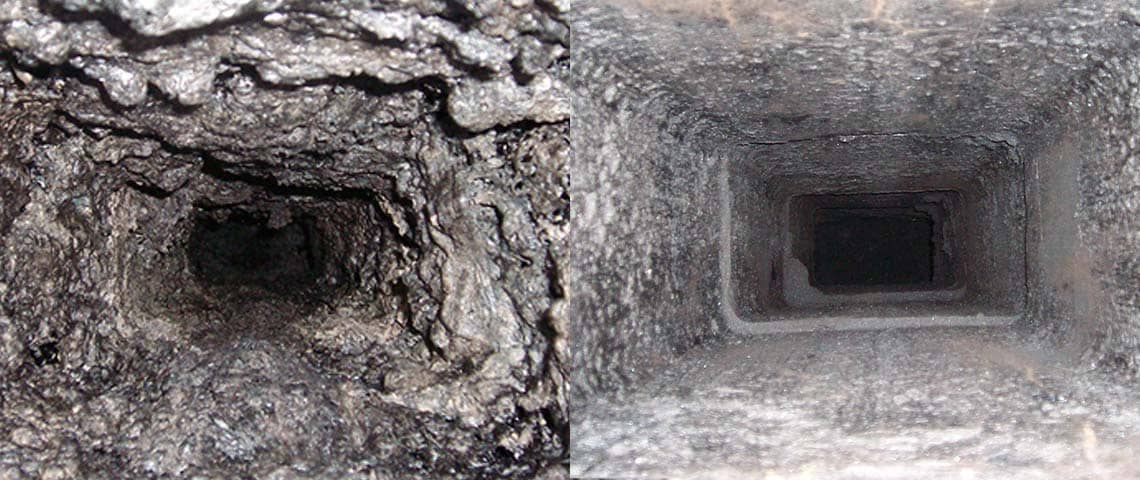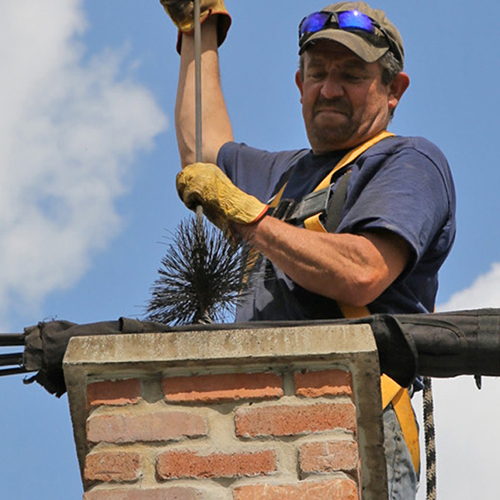Specialist Look After Your Chimney: Provider for Professional Chimney Clean San Jose
Specialist Look After Your Chimney: Provider for Professional Chimney Clean San Jose
Blog Article
What You Required to Learn About Chimney Cleansing: A Comprehensive Guide
Disregarding smokeshaft cleansing can lead to severe repercussions, such as chimney fires and carbon monoxide leakages. In this comprehensive overview, we will certainly check out the reasons why smokeshaft maintenance is crucial, how to recognize when your smokeshaft requires cleaning, the tools and tools needed for the job, and a detailed guide to properly clean your chimney. If you desire to make sure the security and functionality of your chimney, join us as we decipher the secrets of smokeshaft cleansing.
Value of Chimney Maintenance

By on a regular basis examining and cleaning your chimney, you can identify and address any issues before they become significant troubles. A specialist smokeshaft sweep will extensively clean the smokeshaft, eliminating any type of deposits and ensuring appropriate air movement.
It is critical to keep in mind that smokeshaft maintenance must not be limited to the cleansing procedure alone. Routine evaluations, especially prior to the beginning of the home heating season, can help recognize prospective problems and address them promptly. By spending in chimney maintenance, you can appreciate a effective and safe fire place system for many years to come.
Indicators That Your Smokeshaft Requirements Cleaning
Routine maintenance and cleansing of your fireplace system is critical for guaranteeing its safety and performance, and one of the vital signs that your smokeshaft needs focus is the existence of specific indications (Professional Chimney Clean San Jose). Ignoring these indicators can bring about severe safety dangers and decreased performance of your smokeshaft
One of one of the most common indicators that your chimney needs cleansing is the presence of extreme residue or creosote buildup. Soot is a black, fine-grained substance that collects on the walls of your smokeshaft, while creosote is a sticky and combustible compound that can create a thick layer on the chimney liner. Both of these materials are results of burning wood, and if left neglected, they can boost the risk of smokeshaft fires.
An additional sign to watch out for is a unpleasant and strong smell coming from your fireplace. This can be an indicator of an accumulation of debris, pet nests, or perhaps a dead pet in your chimney. These blockages not only impede correct airflow but can also release dangerous gases right into your home.
Additionally, if you discover a considerable reduction in the performance of your fire place, such as trouble in beginning a fire or excessive smoke entering your living space, it may be an indication that your chimney is blocked and looking for cleaning.
Tools and Devices for Chimney Cleaning
To correctly clean up a smokeshaft, it is vital to have the right devices and devices available. Cleansing a chimney needs certain tools developed to successfully eliminate creosote and soot buildup, as well as any blockages that might be existing. The complying with devices are commonly used for smokeshaft cleansing:
Chimney Brush: A smokeshaft brush is the main tool used to remove creosote and residue from the chimney wall surfaces. The brush dimension ought to match the size of the chimney for ideal cleaning.
Chimney Rods: Chimney poles are utilized to expand the reach of the chimney brush. These adaptable rods are typically constructed from fiberglass or polypropylene and can be linked together to get to the entire size of the chimney.
Drop Cloths: It is essential to shield the surrounding location when cleaning a chimney. Ground cloth need to be put around the fireplace to catch any kind of debris or residue that may drop throughout the cleaning process.
Hoover: A high-powered hoover furnished with a HEPA filter is important for properly eliminating the loosened debris and stopping it from spreading throughout the residence.
Safety Devices: Safety goggles, handwear covers, and a dirt mask should be put on to secure against residue, particles, and hazardous chemicals.
Step-By-Step Overview to Cleansing Your Smokeshaft
When preparing to cleanse your smokeshaft, it is crucial to have the required tools and tools in area. To make certain a thorough cleaning, follow this detailed overview. Prior to starting the cleaning process, examine the chimney for any indicators of damages or clog.
When the assessment is total, start by removing the smokeshaft cap and flue cover. Use a chimney brush with sturdy bristles to sweep away the loose residue and creosote from the flue wall surfaces.
Tips for Preserving a Effective and clean Chimney

Normal smokeshaft assessments are important for determining any concerns or obstructions that might exist. It is recommended to have your smokeshaft examined a minimum of yearly by an expert chimney sweeper. They will certainly inspect for creosote buildup, splits in the flue, and any kind of various other possible problems that can impact the chimney's performance.
Routine smokeshaft cleanings get rid of creosote, a highly combustible substance that can build up inside the smokeshaft. Hiring a specialist smokeshaft sweep to cleanse your smokeshaft is the safest and most efficient option.

Finally, mounting a smokeshaft cap can aid prevent debris, animals, and water from entering the chimney. This basic enhancement can significantly extend the lifespan of your chimney and help keep its performance.
Conclusion
In conclusion, advice chimney cleaning is an important aspect of home maintenance that should not be neglected. Routine cleaning and maintenance can help prevent chimney fires, enhance the performance of your fire place, and ensure the safety and security of your home. By adhering to the detailed overview and using the essential tools and tools, you can conveniently cleanse your smokeshaft and maintain its tidiness and effectiveness. Keep in mind to frequently examine your chimney for any indications that cleaning is needed and to adhere to the ideas offered optimal outcomes.
Ignoring chimney cleansing can lead to severe consequences, such as smokeshaft fires and carbon monoxide leaks. In this thorough guide, we will certainly check out the reasons why smokeshaft maintenance is critical, how to determine when your chimney requires cleaning, the tools and tools needed for the job, and a step-by-step overview to efficiently cleanse your chimney. If you want to ensure the safety and security and functionality of your smokeshaft, join us as we decipher the tricks of chimney cleaning.
Chimney Brush: A smokeshaft brush is the primary device used to eliminate creosote and residue from the chimney wall surfaces. Professional Chimney Clean San Jose. Chimney Poles: Chimney rods are made use of to extend the reach of the smokeshaft brush
Report this page